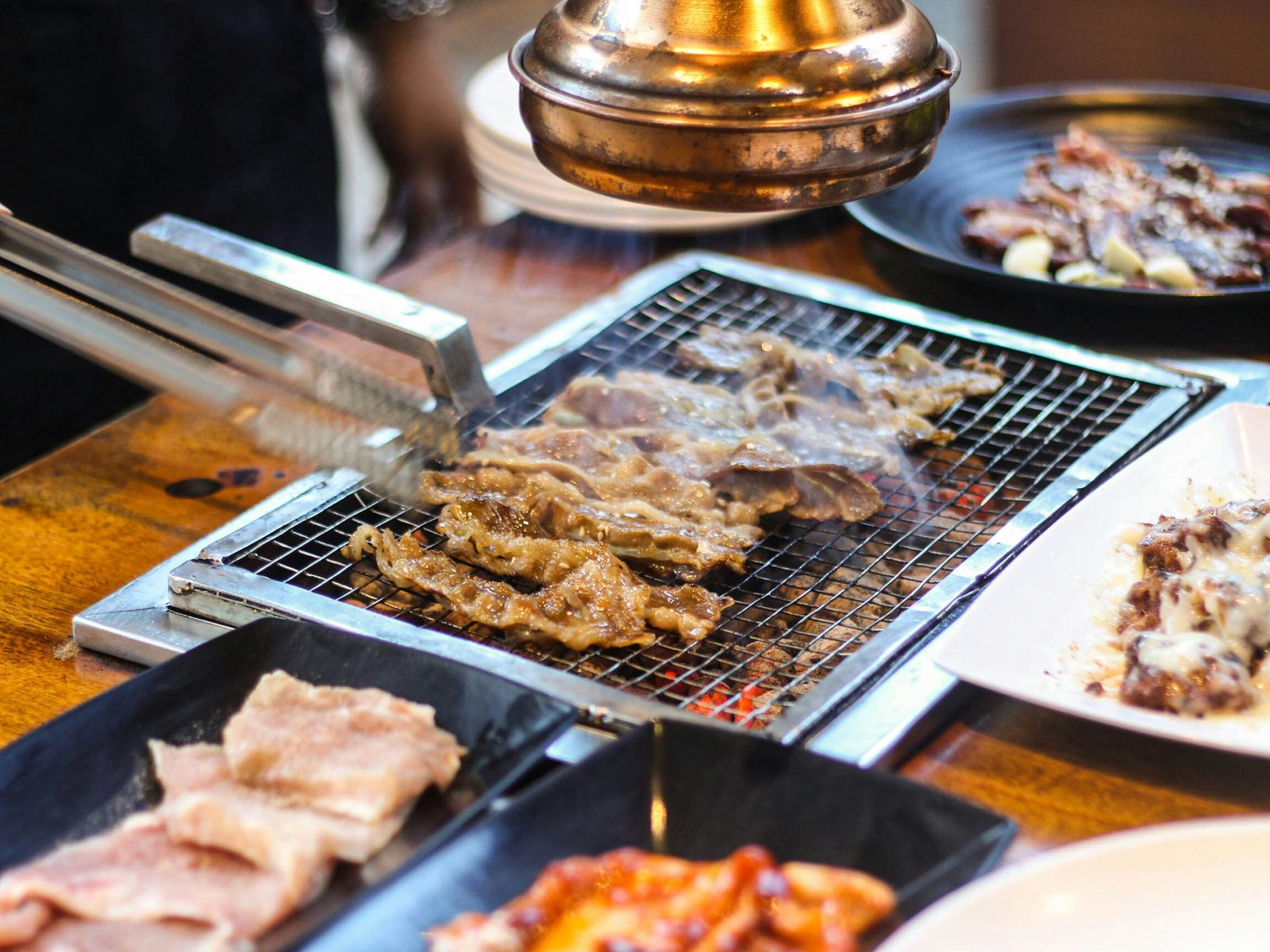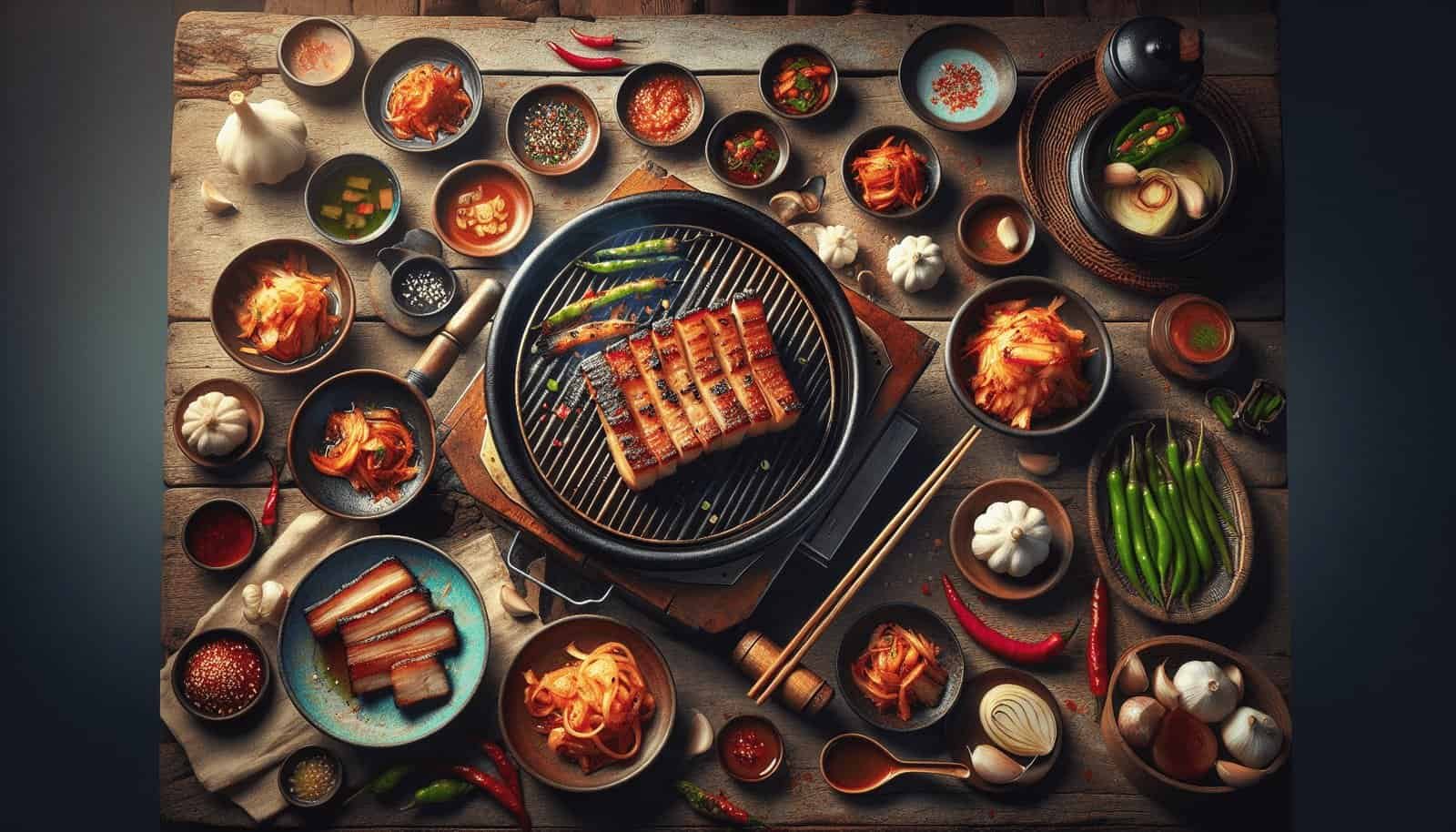How do you properly prepare and serve traditional Korean grilled pork belly (samgyeopsal)? This question has sparked the curiosity of many enthusiasts of Korean cuisine. Samgyeopsal, which translates to “three-layer flesh,” is a beloved dish in Korea, known for its rich textures and the communal experience it fosters. If you’re looking to bring the smoky, savory flavors into your kitchen, this guide will lead you through each step, from selecting the right pork belly to serving it with delectable side dishes and condiments.
Understanding Samgyeopsal
What is Samgyeopsal?
Samgyeopsal is a popular Korean dish that features thick slices of pork belly grilled at the table. Unlike many other grilled meats, samgyeopsal is typically unseasoned before grilling, allowing the natural flavors of the pork belly to shine.
Why is it Popular?
Koreans love samgyeopsal not only for its delicious taste but also for the social aspect. Cooking and eating together around a communal grill fosters conversation and bonding. The myriad side dishes and sauces served with samgyeopsal provide a burst of flavors that elevate the experience.
Selecting the Right Pork Belly
Freshness and Cut
When choosing pork belly, freshness is paramount. Look for meat that has a pinkish color and firm texture. Ideally, the cut should have a balanced ratio of fat to meat to ensure a delectable experience.
Thickness and Presentation
The thickness of pork belly slices can impact the grilling process. Typically, slices should be about 1 cm thick. Thicker pieces might take longer to cook, while thinner slices might dry out quickly.
| Thickness | Description |
|---|---|
| 1 cm | Ideal for grilling; retains moisture and flavor |
Preparing Your Ingredients
Pork Belly Preparation
Before grilling, you can either keep the slices as they are or marinate them lightly. While traditional samgyeopsal is usually unseasoned, you might want to add salt and pepper to enhance the flavor slightly.
Essential Side Dishes and Condiments
Here are some quintessential items you should have ready:
- Lettuce Leaves: Used to wrap the grilled pork belly along with other ingredients.
- Perilla Leaves: Another leafy green option that adds a unique flavor.
- Kimchi: A fermented cabbage dish that provides a sour and spicy kick.
- Ssamjang: A savory dipping sauce made of soybean paste, chili paste, garlic, and sesame oil.
- Garlic and Green Chilies: Freshly sliced garlic and green chilies add crunch and heat.
- Sesame Oil with Salt: A simple yet flavorful dipping sauce.
| Side Dish/Condiment | Description |
|---|---|
| Lettuce Leaves | Used for wrapping the grilled pork belly |
| Perilla Leaves | Adds unique flavor to the wrap |
| Kimchi | Fermented cabbage providing sour and spicy taste |
| Ssamjang | Savory dipping sauce |
| Garlic and Green Chilies | Adds crunch and heat |
| Sesame Oil with Salt | Simple yet flavorful dipping sauce |
Setting Up Your Grill
Indoor vs. Outdoor Grilling
Samgyeopsal can be enjoyed indoors or outdoors. While a charcoal grill enhances the smoky flavor, a stovetop grill pan works perfectly well for indoor settings. Ensure your grill or grill pan is preheated adequately before placing the meat on it.
Temperature Control
Proper temperature control ensures your pork belly is cooked evenly. Aim for medium-high heat to get a nice sear while maintaining tenderness.

The Grilling Process
Step-by-Step Grilling
- Preheat the Grill: Heat your grill to medium-high.
- Place the Pork Belly: Arrange the pork belly slices on the grill without overcrowding.
- Monitor the Cooking: Allow the pork belly to cook for 3-4 minutes on each side until it turns golden brown and crispy.
- Use Tongs: Flip the slices carefully using tongs for even cooking.
- Check for Doneness: Ensure the internal temperature reaches at least 160°F (71°C) for safe consumption.
Tips for Perfect Grilling
- Avoid Overcrowding: Overcrowding the grill can result in uneven cooking.
- Patience is Key: Resist the urge to flip the meat too soon. Allow a nice crust to form.
- Ventilation: Ensure proper ventilation if you’re grilling indoors to avoid smoke buildup.
Serving Samgyeopsal
Preparing the Wraps
Once the pork belly is grilled to perfection, it’s time to assemble the wraps:
- Pick a Leaf: Place a lettuce or perilla leaf in your palm.
- Add Pork Belly: Add a slice of grilled pork belly to the leaf.
- Include Side Dishes: Top with a small amount of kimchi, a slice of garlic, and a dollop of ssamjang.
- Wrap and Eat: Fold the leaf around the filling and enjoy in one bite.
Additional Serving Ideas
To enhance your samgyeopsal experience, consider serving it with:
- Steamed Rice: Complements the rich flavors and provides a base for your wrap.
- Miso Soup: A light, hearty addition that balances the meal.
- Cold Noodles: A refreshing contrast to the warm, savory pork belly.
| Serving Idea | Description |
|---|---|
| Steamed Rice | Complements rich flavors |
| Miso Soup | Light, hearty addition |
| Cold Noodles | Refreshing contrast to the warm pork belly |

Pairing Beverages
Traditional Korean Options
For a true Korean dining experience, consider these beverages:
- Soju: The most popular alcoholic drink in Korea, it pairs well with grilled meats.
- Makgeolli: A slightly sweet, milky rice wine that offers a unique flavor profile.
- Barley Tea: A non-alcoholic option with a nutty, slightly bitter taste.
| Beverage | Description |
|---|---|
| Soju | Popular alcoholic drink in Korea |
| Makgeolli | Slightly sweet, milky rice wine |
| Barley Tea | Non-alcoholic, nutty and slightly bitter |
Modern Alternatives
If you prefer more contemporary options, try:
- Beer: A crisp lager pairs nicely with the savory pork belly.
- Sparkling Water: Offers a palate-cleansing effect between bites.
Clean-Up and Leftovers
Efficient Clean-Up
Grilling can be messy, but here are some tips for efficient clean-up:
- Line the Grill: Use aluminum foil to line your grill for easier cleaning.
- Soak Tools: Soak your grilling tools in soapy water immediately after use to make scrubbing easier.
- Ventilate: Ensure proper ventilation during and after grilling to prevent lingering odors.
Storing Leftovers
If you have leftovers, store them properly:
- Refrigerate Promptly: Place leftovers in an airtight container and refrigerate within two hours of cooking.
- Use Within Three Days: Consume refrigerated leftovers within three days for optimal taste and safety.
| Clean-Up Tip | Description |
|---|---|
| Line the Grill | Use aluminum foil for easier cleaning |
| Soak Tools | Soak grilling tools in soapy water immediately |
| Ventilate | Ensure proper ventilation to avoid lingering odors |
| Refrigerate Promptly | Store leftovers in an airtight container |
| Consume Within Three Days | Use refrigerated leftovers within three days |

Frequently Asked Questions
Can I Marinate the Pork Belly?
While traditional samgyeopsal is typically unseasoned, you can marinate the pork belly for added flavor. Consider a simple marinade with soy sauce, garlic, and a touch of sugar.
Is There a Vegetarian Alternative?
Yes, you can substitute the pork belly with thick slices of tofu or mushrooms. These options can provide a similar grilling experience without meat.
Can I Use a Regular Pan?
A stovetop grill pan is ideal, but you can use a regular frying pan if that’s what you have. Ensure it’s well-heated to get a good sear on the pork belly.
Final Thoughts
Preparing and serving traditional Korean grilled pork belly, or samgyeopsal, is a delightful culinary adventure. From selecting the freshest pork belly to perfecting the grilling process and savoring each bite with flavorful side dishes and condiments, you’re in for a treat. The communal aspect of this dish makes it even more special, bringing people together to enjoy good food and company. So gather your ingredients, fire up your grill, and embark on this flavorful journey.


